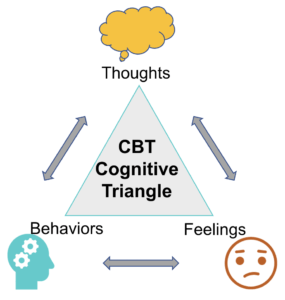SomnusNooze
 While cognitive-behavioral therapy (CBT) has been used extensively to treat many disorders, including insomnia, until now little research has been done to develop similar treatments for idiopathic hypersomnia (IH) and narcolepsy. Dr. Jason Ong, a member of the Hypersomnia Foundation’s Medical Advisory Board, has been working with a team at Northwestern University Feinberg School of Medicine to develop CBT techniques for those with hypersomnias.
While cognitive-behavioral therapy (CBT) has been used extensively to treat many disorders, including insomnia, until now little research has been done to develop similar treatments for idiopathic hypersomnia (IH) and narcolepsy. Dr. Jason Ong, a member of the Hypersomnia Foundation’s Medical Advisory Board, has been working with a team at Northwestern University Feinberg School of Medicine to develop CBT techniques for those with hypersomnias.
The article, Developing a Cognitive-Behavioral Therapy for Hypersomnia Using Telehealth: A Feasibility Study (Ong, et al, 2020), was a pilot study testing a new cognitive-behavioral program for people with hypersomnias. Thirty-five adults with narcolepsy or idiopathic hypersomnia received a 6-session program called CBT-H (cognitive-behavioral therapy for hypersomnia) that was delivered by a psychologist using live videoconferencing. The program used techniques such as following a regular daytime and nighttime schedule, managing depression and anxiety associated with hypersomnias, and improving self-efficacy, which refers to the ability to achieve a goal. The key findings of this study are:
- 40% of participants showed a significant reduction in depressive symptoms;
- Participants reported a significant improvement in self-efficacy;
- The videoconferencing platform made the program accessible;
- People with idiopathic hypersomnia showed similar benefits compared to people with narcolepsy.
Overall, these findings indicate that this new CBT-H program can potentially improve psychological symptoms in people with hypersomnias. It also supported the use of videoconferencing as an accessible way to deliver this program to people with hypersomnias.
This article is relevant to people with hypersomnias because:
- There are currently no scientifically-proven programs that can improve psychological and social functioning in people with hypersomnias.
- The use of videoconferencing can be a useful tool to improve accessibility for people with hypersomnias who are interested in social and psychological support.
CBT-H must be administered by qualified healthcare providers. If someone with a hypersomnia would like to try CBT-H, they should speak to their health care provider to find one who has experience in CBT. Qualified providers can download the CBT-H treatment manual HERE.
References:
Ong, J.C., Dawson, S.C., Mundt, J.M., Moore, C. Developing a Cognitive-Behavioral Therapy for Hypersomnia Using Telehealth: A Feasibility Study. Journal of Clinical Sleep Medicine. 2020.
